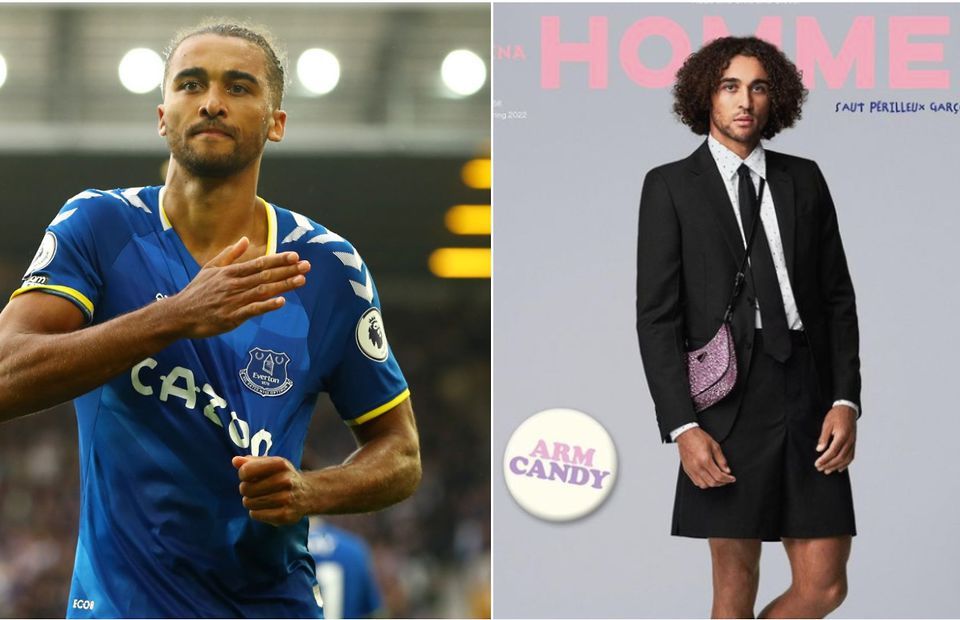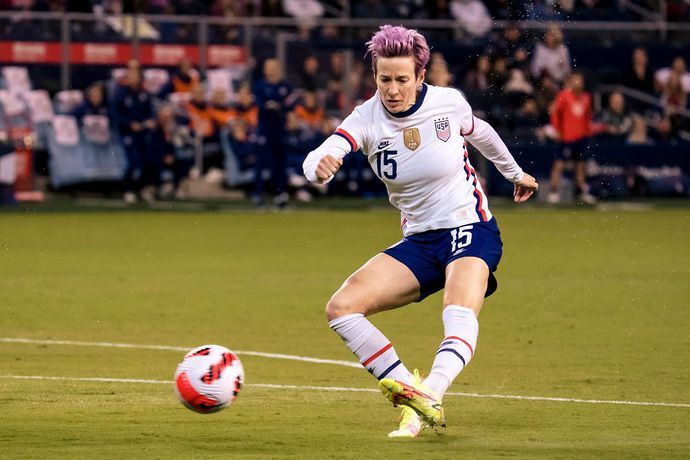20 years ago, then Manchester United manager, Sir Alex Ferguson, gave David Beckham an ultimatum –– ’Either the sarong goes or you do.’This was not purely in reference to the Scottish manager’s disdain for Beckham’s dress sense, but rather that in Ferguson’s mind, it was not representative of how footballers should behave.Football’s fashion pioneer had multiple run-ins with Ferguson when it came to appearance. Just before the FA Charity Shield final in 2000, the former England captain was forced to shave off his mohawk haircut before he took to the pitch at Wembley.Speaking to Otro, Beckham admits he knew Ferguson would lambast him for his hair choice. He even wore a beanie during dinner the night before and on the coach to stop the United boss from seeing his new style.“When we were growing up the manager wouldn't let us even step on a pitch wearing a pair of red boots or a pair of white boots. Simple as that,” Beckham stressed. ENTER GIVEAWAYThat the famed football icon was one of the only players to contend with Ferguson’s unwavering ground rules at the time speaks volumes to how male footballers were expected to conduct themselves. Indeed, players were not just forced to act in a particular manner but also dress a certain way.Even now, the same appears to apply. Except, it’s not just managers enforcing these gender norms. Every single action of a professional male footballer, especially those who play at the highest level, is subject to intense scrutiny online. So much so, that the majority have extensive PR teams controlling their actions to paint a picture of these players which is considered ‘appropriate.’But England and Everton star Dominic Calvert-Lewin refuses to conform to these outdated stereotypes.The 24-year-old is inspired by streetwear and its surrounding culture. Much like football, he considers fashion a passion and is intent on dressing in the manner he chooses.White suits, double-breasted blazers, Chanel bags –– these are all clothes and accessories the striker has been photographed wearing in recent times.“As a footballer, you’re so in a routine, and you do the same things every day,” he told The Face magazine when asked why he liked to express himself with his style.
ENTER GIVEAWAYThat the famed football icon was one of the only players to contend with Ferguson’s unwavering ground rules at the time speaks volumes to how male footballers were expected to conduct themselves. Indeed, players were not just forced to act in a particular manner but also dress a certain way.Even now, the same appears to apply. Except, it’s not just managers enforcing these gender norms. Every single action of a professional male footballer, especially those who play at the highest level, is subject to intense scrutiny online. So much so, that the majority have extensive PR teams controlling their actions to paint a picture of these players which is considered ‘appropriate.’But England and Everton star Dominic Calvert-Lewin refuses to conform to these outdated stereotypes.The 24-year-old is inspired by streetwear and its surrounding culture. Much like football, he considers fashion a passion and is intent on dressing in the manner he chooses.White suits, double-breasted blazers, Chanel bags –– these are all clothes and accessories the striker has been photographed wearing in recent times.“As a footballer, you’re so in a routine, and you do the same things every day,” he told The Face magazine when asked why he liked to express himself with his style.
It’s that bit of freedom. If you want to wear a suit for no reason, why not?
Calvert-Lewin has made headlines for his fashion again this week, which has led to a polarising reception on social media.
Dressed in Prada, featuring a black blazer, white polka-dot shirt, black tine and black flared suit shorts, the Everton star fronted the cover of Homme Plus with what some have described as a 'school-girl' inspired outfit.
Some have acknowledged that the Sheffield born forward is succeeding in ‘breaking barriers’ with his pronouncement of individuality.
Alex Culvin, who manages player relations at FifPro, wrote: “Dominic Calvert-Lewin actively challenges and breaks down hyper-masculine gender norms that dominate men’s football through his fashion choices. And I’m here for it!”
Similarly, Charlie Carmichael, deputy head of content for Snack Media, told GiveMeSport Women: “Pigeonholing male footballers into antiquated masculine stereotypes has long been a damaging exercise. Calvert-Lewin has broken out of the box he and his teammates have always been placed in and is blazing a new path. Much like his trendsetting dress sense, the hope now is that his bravery catches on.”
Melissa Reddy, senior football correspondent for The Independent also echoed these thoughts. “I'm a massive fan of Dominic Calvert-Lewin expressing himself just the way HE wants, wearing what HE likes, and being exactly who HE wants to be with zero Fs given to what anyone else thinks about it,” she stressed.
While men’s football has long had problems when it comes to embracing one’s identity, the women’s game has always been ostensibly more accepting of freedom of expression.
Former Ballon d’Or winner Megan Rapinoe embodies this assertion. The 36-year-old is renowned for her iconic pink hair and has appeared in multiple promotional pieces for clothing company Wildfang –– who offer menswear-inspired styling.
The two-time World Cup winner has also co-founded a gender-neutral lifestyle brand with fellow teammates, Christen Press, Tobin Heath and Meghan Klingenberg.
Rapinoe’s influence in trying to inspire individuality has transcended across the whole of women’s football. The environment has developed so that players have a safe space to be open about who they are and feel completely normal. In the men’s game, however, there is still that same stigma and fear of change.
In an era when Australia’s Josh Cavallo became the first current top-flight male professional footballer to come out as gay only a matter of weeks ago, Calvert-Lewin’s magazine cover serves as far more than just a fashion statement but an indication of bravery.
Beckham wore the infamous sarong in 1998, yet perceptions of male footballers wearing unconventional clothing haven’t developed to the extent many would have you believe.
Some Everton fans have compared Calvert-Lewin to former striker Duncan Ferguson –– seemingly trying to suggest the two are polar opposites because one is a ‘school-girl’ and the other an aggressive alpha male.
The reality is the two are actually very similar. Both strong, physical and powerful forwards. Both great in the air. Both integral to Everton’s success as a team.
The sooner people realise that there is no connection between dress sense, sexuality and gender with one’s ability to kick a football, the sooner the landscape may finally start to shift. You need only look at the women’s game as a case in point. Perhaps men’s football should start taking notes.





















